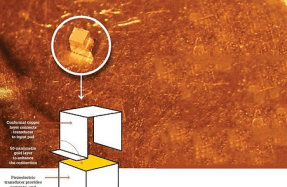‘MAD MIKE’ HUGHES REJECTED SCIENCE AND CHASED FAME. IT KILLED HIM.



THE MOJAVE DESERT HAD CAST ITS SPELL OVER ‘MAD MIKE’ HUGHES THE NIGHT HE THOUGHT TO FLY TO THE EDGE OF SPACE.
It’s no wonder why. The sky is fall-over-backwards big, wrapping around you in a way that hints at infinite possibilities. After buttery sunsets fade into glowing orange then purple light, the heavens do their high-wattage flexing. Maybe this struck him as an invitation, and maybe that celestial pull was amplified by the proximity to Hollywood, where his fantasies of fame could be spun up into life.
It was some intermingling of these elements that brought Hughes and his friend Waldo Stakes here, like so many others who found their way to Southern California’s mythological landscape from places like Oklahoma City and Chicago: hungry but broke, flogging a dream, bristling with intelligence, and willing to chase an idea that others might consider unreasonable – like launching a man into the sky in a home-made steam-powered rocket.
Pause for a moment and think about the undeniable elegance and utter simplicity of it: heating water until it launches – in a rocket, like from a child’s drawing! Thousands of feet up! Has there ever been an idea so fanciful and yet so completely attainable? And what if that was just a precursor to something even more fantastic – being the first civilian to send himself more than 100 km up to the edge of space?
All of this made total sense to Hughes and Stakes in the two years since this latest idea had come. But then there was a problem.
On the evening of 21 February 2020, Stakes, a self-taught rocket scientist, was arguing with Hughes about their rocket launch scheduled for the next day outside Barstow, California. Stakes was haunted both by a dream a friend had had – a detailed vision of a nightmarish crash – and by modifications Hughes had made to the projectile after three failed launch attempts.
Stakes implored his friend to reconsider, to ditch the fourth try, and to focus instead on their plan to touch the edge of space.
But Hughes, as always, had his reasons – he had a new audience to win over, one more rung of fame to ascend – and the argument went nowhere. As much as Stakes was meticulous in his planning and strident about his science, he had a steadfast rule: The pilot is the daredevil putting his life on the line, and so that man, and that man alone, makes the final call.
Mad Mike was the pilot. And Waldo Stakes knew without a shade of doubt: Mad Mike wanted to launch.
Mike Hughes grew up a garage rat in Oklahoma City, forever rattling around the family auto-body shop. His father Jay worked on cars and raced them, and the story goes that Mike, the older of two boys, started attending the old man’s events when he was two months old.
The elder Hughes was keen to indoctrinate his boys into his passion, says Bob Ponder, Mike’s uncle. Both took to the work, and through years of tutelage Mike became accomplished in bodywork and began competing as well. ‘His father wanted them in the racing business,’ says Ponder. ‘So they raced motorcycles, cars, whatever their father would help them get or build.’
Mike started racing motorcycles when he was 12, tearing around tracks of ice on studded tyres. As a young man Hughes turned pro, competing on the American Motorcyclist Association’s flat-track circuit. In 1979, in his 20s, he became a champion speedway motorcycle ice racer.
The family believed him to be a savant. ‘Mike was brilliant,’ says Ponder. ‘He was a reader.
You’re reading a preview, subscribe to read more.
Start your free 30 days





